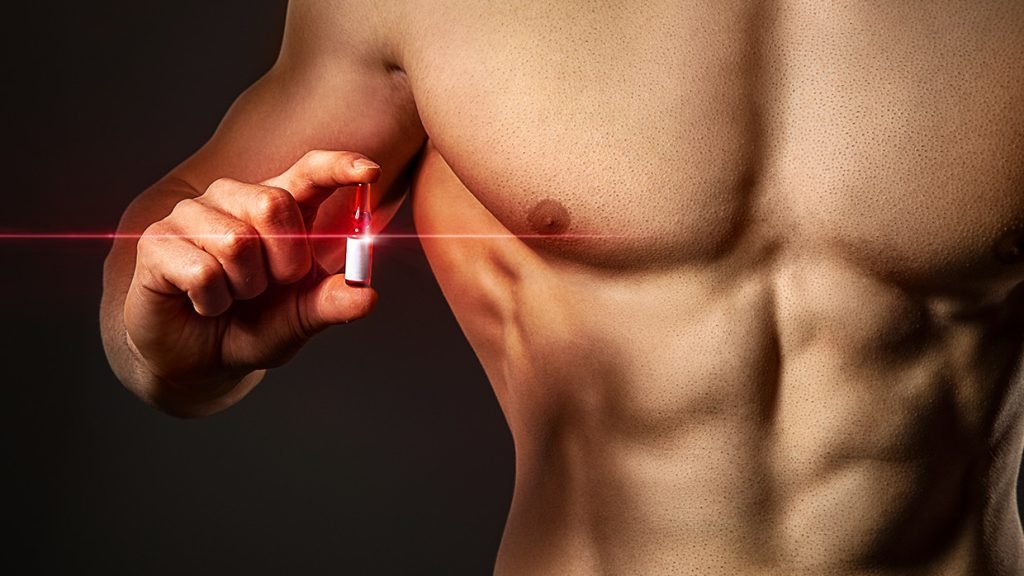Words and Pictures
The MovieBlog Archives
Understanding the Causes and Treatment Options for Erectile Dysfunction
Thursday , 12, October 2023 Health Comments Off on Understanding the Causes and Treatment Options for Erectile Dysfunction
Erectile Dysfunction (ED), often referred to as impotence, is a common condition that affects millions of men worldwide. It is the inability to achieve or maintain an erection sufficient for satisfactory sexual performance. While occasional difficulties with erections are normal, persistent ED can be a sign of an underlying health problem. Understanding its causes and the available erectile dysfunction treatment is essential for affected individuals and their partners.
Causes of Erectile Dysfunction
Physical Factors: Chronic illnesses like diabetes, hypertension, and cardiovascular diseases can damage blood vessels and reduce blood flow to the penis, causing ED. Obesity, high cholesterol levels, and hormonal imbalances can also contribute.
Psychological Factors: Stress, anxiety, depression, and relationship problems can interfere with sexual arousal, leading to ED. Emotional issues can exacerbate the condition, creating a cycle of performance anxiety.
Neurological Disorders: Conditions such as multiple sclerosis, Parkinson’s disease, and stroke can disrupt the communication between the brain and the reproductive system, causing erectile difficulties.
Lifestyle Choices: Smoking, excessive alcohol consumption, and substance abuse can constrict blood vessels, hampering the blood flow needed for an erection. Sedentary lifestyle and poor diet choices can contribute to obesity and related health problems.
Medications: Certain medications, including antidepressants, antihypertensives, and prostate cancer treatments, have ED as a side effect.
Treatment Options
Lifestyle Changes: Modifying lifestyle habits can significantly improve ED. Regular exercise promotes better cardiovascular health and weight management, reducing the risk of ED. A balanced diet rich in fruits, vegetables, whole grains, and lean proteins supports overall well-being.
Psychological Counseling: For cases related to stress, anxiety, or relationship issues, therapy or counseling can help individuals and couples address emotional barriers, providing tools to cope and communicate effectively.
Medications: Several oral medications like sildenafil (Viagra), tadalafil (Cialis), and vardenafil (Levitra) increase blood flow to the penis, aiding in achieving and maintaining an erection. These medications are often effective, but consultation with a healthcare provider is essential for proper dosage and usage.
Vacuum Erection Devices: These devices use suction to draw blood into the penis, creating an erection. A constriction ring is placed around the base of the penis to maintain the erection for sexual activity.
Penile Injections and Urethral Suppositories: Medications can be injected directly into the base or applied as suppositories into the urethra to stimulate blood flow and induce an erection.
Hormone Replacement Therapy: For cases involving hormonal imbalances, hormone therapy can be administered to restore proper hormone levels, improving sexual function.
Surgery: In severe cases where other treatments are ineffective, surgical options such as penile implants or vascular surgery to improve blood flow may be considered.
Conclusion
Erectile Dysfunction is a common condition that can affect men of all ages, impacting both physical and emotional well-being. It is essential to approach ED with openness and seek medical advice promptly. Understanding the underlying causes, making lifestyle changes, and exploring appropriate treatment options can restore sexual function, enhance self-esteem, and improve overall quality of life for individuals and their partners. Seeking support from healthcare professionals and mental health experts is a vital step toward regaining confidence and enjoying a fulfilling intimate life.
…
What You Need to Know About the Function of Testosterone
Monday , 10, April 2023 Health Comments Off on What You Need to Know About the Function of Testosterone Testosterone is a hormone that plays a critical role in the development and maintenance of male characteristics. It is produced primarily in the testicles, although small amounts are also produced in the adrenal glands.
Testosterone is a hormone that plays a critical role in the development and maintenance of male characteristics. It is produced primarily in the testicles, although small amounts are also produced in the adrenal glands.
The function of testosterone is multi-faceted, and it plays a role in a range of physiological processes. A deficiency of the hormone can lead to several physical and mental health problems. However, one can always head to a TRT clinic Canada to learn about the available treatment options. Here are some of the key functions of testosterone:
- Development of male sexual characteristics: Testosterone is responsible for the development of male sexual characteristics such as a deeper voice, increased muscle mass, and the growth of facial and body hair. During puberty, testosterone levels increase dramatically, leading to the development of these characteristics.
- Regulation of sex drive: Testosterone is also involved in regulating sex drive, or libido. Men with low levels of testosterone may experience a decrease in libido and may have difficulty achieving or maintaining an erection.
- Maintenance of muscle mass and bone density: Testosterone is important for the maintenance of muscle mass and bone density. As men age, their testosterone levels naturally decrease, which can lead to a decrease in muscle mass and bone density, increasing the risk of osteoporosis and fractures.
- Production of red blood cells: Testosterone is involved in the production of red blood cells, which carry oxygen throughout the body. Low levels of testosterone can lead to a decrease in red blood cell production, leading to fatigue and other symptoms.
- Regulation of mood and cognitive function: Testosterone also plays a role in regulating mood and cognitive function. Low levels of testosterone have been associated with depression, irritability, and cognitive decline.
- Maintenance of overall health and wellbeing: Adequate levels of testosterone are important for overall health and wellbeing. Low levels of testosterone have been associated with an increased risk of cardiovascular disease, type 2 diabetes, and metabolic syndrome.
Testosterone levels can be influenced by a range of factors, including age, diet, exercise, and other lifestyle factors. As men age, their testosterone levels naturally decrease, which can lead to a range of negative health outcomes. However, there are strategies that men can use to optimize their testosterone levels and improve their health and wellbeing.
One strategy is to engage in regular exercise. Studies have shown that exercise, particularly resistance training, can increase testosterone levels in men. Exercise can also help to improve muscle mass and bone density, which can help to prevent age-related declines in these areas.
Another strategy is to eat a healthy diet. Certain nutrients, such as zinc and vitamin D, are important for the production of testosterone. Eating a diet rich in these nutrients, as well as other healthy foods such as fruits, vegetables, and whole grains, can help to support optimal testosterone levels.
Maintaining a healthy weight is also important for testosterone levels. Excess body fat can lead to a decrease in testosterone production, while losing weight can help to increase testosterone levels.
In some cases, testosterone replacement therapy may be an option for men with low levels of the hormone. Testosterone replacement therapy taken at a reputed TRT clinic Canada involves the administration of testosterone through injections, patches, gels, or pellets. It can be an effective way to …
What You Should Know About Using Dog Conditioner?
Thursday , 29, December 2022 Health Comments Off on What You Should Know About Using Dog Conditioner? Dog conditioner is a product used after shampooing, which helps to untangle the hair, impart a shiny finish, and hydrate coats and skin. Just as with humans, these grooming products are specifically designed to add moisture and hydration to the coat of your dog, leaving its coat feeling soft and shiny. If you think that your pet’s coat can benefit from added moisture and shine, use of a dog conditioner might be a good idea.
Dog conditioner is a product used after shampooing, which helps to untangle the hair, impart a shiny finish, and hydrate coats and skin. Just as with humans, these grooming products are specifically designed to add moisture and hydration to the coat of your dog, leaving its coat feeling soft and shiny. If you think that your pet’s coat can benefit from added moisture and shine, use of a dog conditioner might be a good idea.
After washing the hair with a shampoo or more, it is a good idea to use a high-quality conditioner. If you are bathing your dog more than once per month, it is probably best to use conditioner in addition to the shampoo, in order to make sure that the dogs skin and coat are not drying. If you are washing your dog more than 1x a month, you should consider conditioning your dog, which will seal in hair strands and help keep your coat moist.
Using a conditioner each time you wash the dog shampoo from your dogs hair will make it easier to brush the dog since the poochs hair will be well-conditioned and softer. Following with conditioner helps replenish moisture, softening & soothing the itchy dogs skin. While shampoo strips dirt and mud off of your dogs fur and skin, conditioner helps manage your dogs coat and keep them from drying out.
This means that both shampoo and conditioner strip oil away from your dogs skin, drying his coat out, potentially leading to irritation. To make sure that you are not irritating your dogs skin, avoid using human products or soaps on your dog, and use products specifically designed for your dogs coat and skin. There is a reason why shampoos and conditioners are made just for dogs: Human skin has a different pH level than dogs.

A dogs skin has different pH levels from that of an average humans, so it is always best to go with dog-specific conditioners, since the products that are made for humans may be irritating the skin. Because of their formulation, human-based conditioners may cause the opposite of the effects that you would like from conditioners: they may deprive the dogs skin of moisture, leaving them itchy and inflamed.
With a gentle conditioner that is free of harsh ingredients, added moisture helps to calm sensitive skin. Dog conditioners can help to calm irritated, sensitive skin, as long as you select one specifically designed to target trouble spots, and can even help make the coat appear fuller. They impart a shine and luster to the coat so that your pooch always looks attractive and healthy.
Use of a dog conditioner not only makes the pet’s coat look better, but will also make your job much easier, helping remove mattes and tangles, and the post-bath brushing out will be a snap. Formulated using the most beneficial ingredients for dog skin and coat, these conditioners will nourish and moisturize your pup’s coat and skin, helping them look and feel like the best furry dog you can possibly have, as well as helping to smell amazing.…
What Does Androgenic Mean?
Thursday , 8, September 2022 Health Comments Off on What Does Androgenic Mean?Androgen hormones are steroids, a group of hormones released from your ovaries, testes, or adrenal glands. Androgen hormones are also produced by the adrenals, which are located above the kidneys and are responsible for the release of a variety of hormones. The adrenal glands, located above each kidney, also make androgens.
The ovaries and adrenal glands also produce androgens, but much lower levels than those in the testes. Androgens are produced mostly by the adrenal glands and ovaries. In women, androgens are produced in the ovaries and the adrenal cortex, and converted to estrogen. Testosterone is the male sex hormone, or androgen, produced in a womans ovaries at low levels. Alprostadil for sale is considered as a golden measure to boost Testosterone in males.
It is true that testosterone and other androgens are the most important hormones in the sexual development of men who have male sex organs. Androgens are generally thought to be male hormones, but they are important for female health too. While androgens are not a major sexual hormone for women, an imbalance still has an impact on womens health and wellbeing. While some view androgens primarily as the sex hormones of men, the hormones aid people as they go through puberty and grow physically and sexually.
How Does Androgen Increase?
In men, androgens support the production of sperm and development of secondary male sex characteristics. At the time of puberty, males have a marked increase in androgen levels, and androgens mediate the development of masculine secondary sexual characteristics, in addition to triggering spermatogenesis and fertilization, and male behavioural changes, such as increased sexual desire. Testes in the male reproductive system and the ovaries in the female reproductive system produce androgens. In females assigned at birth, the androgen hormone is made in the fat cells and ovaries.
The ovaries, adrenal glands, fat cells, and skin cells create a womans supply of androgens. High levels of the gender hormone called androgens are the distinguishing feature of polycystic ovarian syndrome (PCOS), a hormone disruption affecting individuals assigned female at birth. Androgen excess in women (hyperandrogens) is more often than not caused by polycystic ovary syndrome (PCOS), which affects as many as 12% of women. Androgen excess is the most common endocrine disease among women of reproductive age.
What Is Androgen Hormone In Female?
High levels of androgens (hyperandrogens) are most often an issue for those assigned female at birth (AFAB). This article will review one hormone group called androgens, and what happens when levels are too high (or too low) in men and women. Androgens are generally thought of as being male hormones, but womens bodies also produce small amounts of androgens by nature — about tenths to twentieths the amount produced by mens bodies, on average. Hormones that are made from cholesterol, such as androgens and estrogen, are known as steroid hormones (1).
Testosterone (T), dihydrotestosterone (DHT), dehydroepiandrosterone (DHEA), and androstenedione are all androgen hormones. Of the circulating androgens, only T and DHT are capable of activating androgen receptors. In addition, androgen-to-estrogen conversion is increased in adipose tissue (particularly in obese women), leading to small, persistent increases in the secretion of luteinizing hormones and suppression of ovulation. In reproductive-age women, 25% of circulating testosterone comes from the adrenal glands; the ovary contributes an additional 25%.…